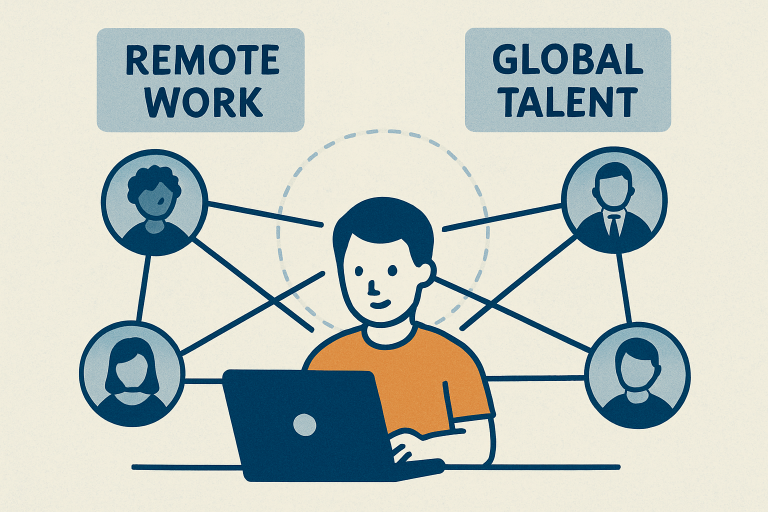In today’s rapidly evolving business world, virtual assistants (VAs) are no longer just a luxury reserved for large enterprises—they have become indispensable assets for organizations of every size and industry. This shift is transforming the way that modern businesses operate, introducing levels of agility, innovation, and efficiency that were previously unattainable. Virtual assistants handle everything from day-to-day administrative support to delivering specialized and technical expertise, enabling organizations to streamline processes and stay ahead in a competitive landscape. Companies looking to leverage these benefits turn to trusted EA recruitment agencies for streamlined access to high-quality virtual assistants, ensuring a seamless hiring and onboarding process.
The rapid adoption of VAs is closely tied to advances in technology and the increasing connectedness of the global workforce. These changes are helping organizations optimize their productivity, minimize operational costs, and foster cultures of innovation and growth. As digital transformation accelerates, harnessing remote talent through dedicated agencies and digital tools is proving essential for organizations that aspire to stay adaptive and resilient amid ongoing market disruption.
Enhancing Business Efficiency and Flexibility
One of the most significant ways virtual assistants are changing the business landscape is by radically enhancing both efficiency and flexibility. Hiring a full-time, in-office workforce can be prohibitively expensive and logistically complex for many organizations, particularly startups and small-to-medium enterprises. Virtual assistants provide a game-changing alternative, offering the ability to scale support up or down as needed. This flexibility means businesses no longer face the constraints of rigid staffing models or lengthy employment contracts. Instead, they can quickly ramp up their team during periods of peak demand or when embarking on new initiatives, and just as easily reduce resources when demand wanes.
Delegating repetitive, time-consuming, and often lower-value tasks such as calendar management, lead generation, data entry, and basic customer service allows core staff to focus on higher-impact, revenue-generating work. This realignment of roles eliminates inefficiencies and maximizes employee strengths, creating a more dynamic and responsive workforce. Moreover, by optimizing staffing costs through virtual assistants, organizations are able to reinvest more resources into long-term strategies, innovation, and customer experience.
Integration of AI and Automation
Today’s virtual assistants are increasingly empowered by advancements in artificial intelligence and automation tools, fundamentally reshaping how tasks are performed and value is delivered. Modern VAs are no longer limited to manual, repetitive functions—they now operate in tandem with smart algorithms that enable them to process large volumes of information, automate complex workflows, and provide near-instantaneous customer responses. For instance, AI-driven platforms allow VAs to efficiently manage incoming customer inquiries, organize intricate schedules, extract and analyze business data, and even oversee comprehensive digital marketing campaigns.
This seamless integration of human and machine intelligence delivers more responsive and accurate support to end users. AI can autonomously recognize and flag potential errors, uncover hidden business insights, and handle routine tasks, freeing VAs to devote more of their expertise to creative problem-solving, negotiation, and strategic planning. The combination of virtual assistant talent and cutting-edge technology is powering a new era of productivity and delivering an improved, more personal customer experience. Businesses that integrate these capabilities into their VA strategy are positioning themselves to move faster and innovate more deeply than ever before.
Access to a Global Talent Pool
One of the transformative benefits of virtual assistants is the opening of access to a diverse and highly skilled global talent pool. Traditional in-office hiring is limited by the geographic boundaries of the local labor market, but with VAs, those constraints no longer apply. Organizations can now source and onboard talented professionals from any region, aligning specific skill sets and knowledge bases with the immediate needs of the business, whether IT support, digital transformation, bookkeeping, or multilingual content development.
This worldwide access allows companies to build multi-cultural, multi-time-zone teams that deliver 24/7 service and bring fresh, innovative perspectives to their operations. Tapping into varied cultural backgrounds helps businesses adapt their strategies and communications for diverse markets, boosting customer satisfaction and brand reputation internationally. The continuous inflow of ideas and creativity from around the globe further drives business growth and ensures long-term competitiveness in an ever-evolving global marketplace.

Improving Work-Life Balance
Beyond enhancing business output, virtual assistants are pivotal in improving employee well-being and promoting a healthier work-life balance. The ability to delegate non-core and repetitive tasks to VAs means that internal staff can spend more time focusing on meaningful, challenging projects that contribute to their professional growth and job satisfaction. This results in greater motivation and engagement among employees and substantially reduces the risk of burnout and turnover, a major advantage in today’s tight labor market.
Virtual assistants help to reinforce flexible work arrangements by enabling remote work and allowing teams to operate from diverse locations or time zones. Flexible scheduling empowers individuals to better balance their professional and personal lives, leading to higher overall morale and greater productivity. Numerous studies have shown that organizations boasting a strong work-life balance are more attractive to top talent, retain employees longer, and foster more innovative, dedicated cultures. This makes VAs a strategic asset not only for operational efficiency but also for talent management and long-term organizational health.
Leveraging Advanced Communication Tools
The effectiveness of virtual assistants relies on robust, real-time communication and collaboration, and recent technological advances have made this more achievable than ever. Modern businesses utilize platforms such as Slack for instant messaging, Zoom for virtual meetings, and Trello or Asana for project management and workflow transparency. These tools help to integrate VAs seamlessly into existing teams, break down silos, and ensure that both remote and on-site staff are always aligned with company goals and project timelines.
Adopting advanced digital communication solutions fosters a culture of openness, accountability, and innovation. Teams can quickly share updates, provide feedback, and resolve roadblocks—no matter where individual members are located. Streamlined communication not only reduces misunderstandings and errors but also accelerates decision-making, boosts trust among team members, and makes the overall organization more agile. With the right infrastructure in place, VAs become trusted, productive partners who can deliver exceptional value from any corner of the world.
Conclusion
Virtual assistants are redefining the future of work, offering businesses newfound levels of efficiency, cost control, and access to specialized global expertise. When strategically integrated—leveraging innovative technology and support from reputable partners such as virtual assistant staffing agencies—virtual assistants can spur growth, empower teams, and future-proof businesses for the next era of digital transformation. Companies capable of merging remote talent, advanced automation, and collaborative tools will be well-positioned to thrive and innovate in a constantly changing business environment.
For deeper insights on effective hiring, onboarding, and management of virtual assistants, consider exploring these expert resources: virtual assistant hiring best practices and why every virtual office needs a virtual assistant. These guides provide proven strategies that can help organizations fully realize the potential of a virtual assistant-supported workforce.







